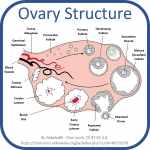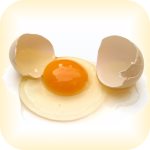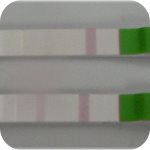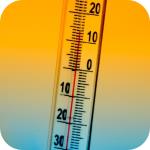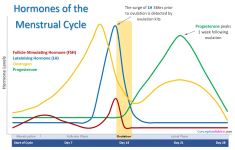
(Click to Enlarge)
It is 5 days before ovulation because sperm can survive up to 5 days in the reproductive tract and still fertilise the egg. It is 1 day after ovulation because the egg can only survive for 1 day if fertilisation does not occur.
As if this wasn’t a short enough time frame, most pregnancies actually result from sex on the 2 days before ovulation and the day of ovulation itself, reducing the peak times of the fertile window to 3 days only.
This short time frame means that couples who focus sex during their fertile window have significantly higher pregnancy success rates. They are also more likely to get pregnant quicker than couples who do not time sex in this way. This therefore leads to the question; how do I know when my fertile window is?
When is the Fertile Window?
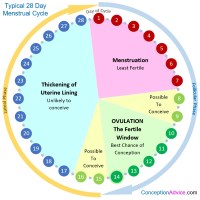
The menstrual cycle is a complex process, regulated by multiple hormones which are released from various parts of the body, not just the reproductive system. It is helpful to know a bit about the cycle in more depth in order to understand what happens at what time, and what may cause any changes or abnormalities within this cycle.
For a description of a typical menstrual cycle and learn about the possible changes which may affect your fertility, check out the section: The Menstrual Cycle Calendar Phases
How Do I Calculate the Time of My Fertile Window?
So, if we can’t determine the date of ovulation using a calendar, how can we know when it happens? Thankfully we don’t have to use guess work as there are reliable ways of calculating when your fertile window is. This is possible by learning about the ovulation signs which your body produces. These signs can be very slight and difficult to determine, but if you know what to look out for and how these signs display themselves, you can learn when you are at your most fertile, and ensure that you are targeting sex during this timeframe.
To learn more about the important ovulation signs and what to look out for, check out the section: When Do Women Ovulate – The Best Time To Get Pregnant
Basal Body Temperature
Basal body temperature refers to the lowest body temperature level that you have over a period of 24 hours. This fluctuates throughout the cycle, and daily measurements can be used to identify the time of ovulation. Just before you ovulate, your body temperature drops ever so slightly, and then rises again after ovulation.
You can learn more about how your basal body temperature changes during the cycle and how you can measure it accurately to determine the timing of ovulation in the section: How to Measure Basal Body Temperature
Cervical Position and Texture
The cervix moves position and changes texture throughout the cycle, which makes it a useful indicator of when you are at your most fertile and most likely to get pregnant. During your fertile window, the cervix becomes high in the vagina with a soft texture to it.
Learn how to identify the different positions and textures of the cervix at the time of ovulation in the section: Cervix Position During Ovulation
Cervical Mucus
The amount and type of cervical mucus also varies during the menstrual cycle. At the time of ovulation, it becomes clear and stretchy, which aids and nourishes the sperm on the route to the uterus and the egg.
Learn how to distinguish the different types of cervical mucus: How to Check Your Cervical Mucus for Signs of Ovulation
Fertility Charting
Once you have learned how to identify the different signs which suggest that ovulation is about to occur, you can use this to calculate your exact fertile window and time of ovulation. This is done through a process called fertility charting. It involves documenting the results of all of these different signs, as well as some other useful information, and gives you a more detailed understanding of when ovulation happens during your own cycle.
Learn more about fertility charting and how you can start your own personal chart today using the section: Fertility Charting Fertile – The Window Calculator
Links to Popular Related Pages
